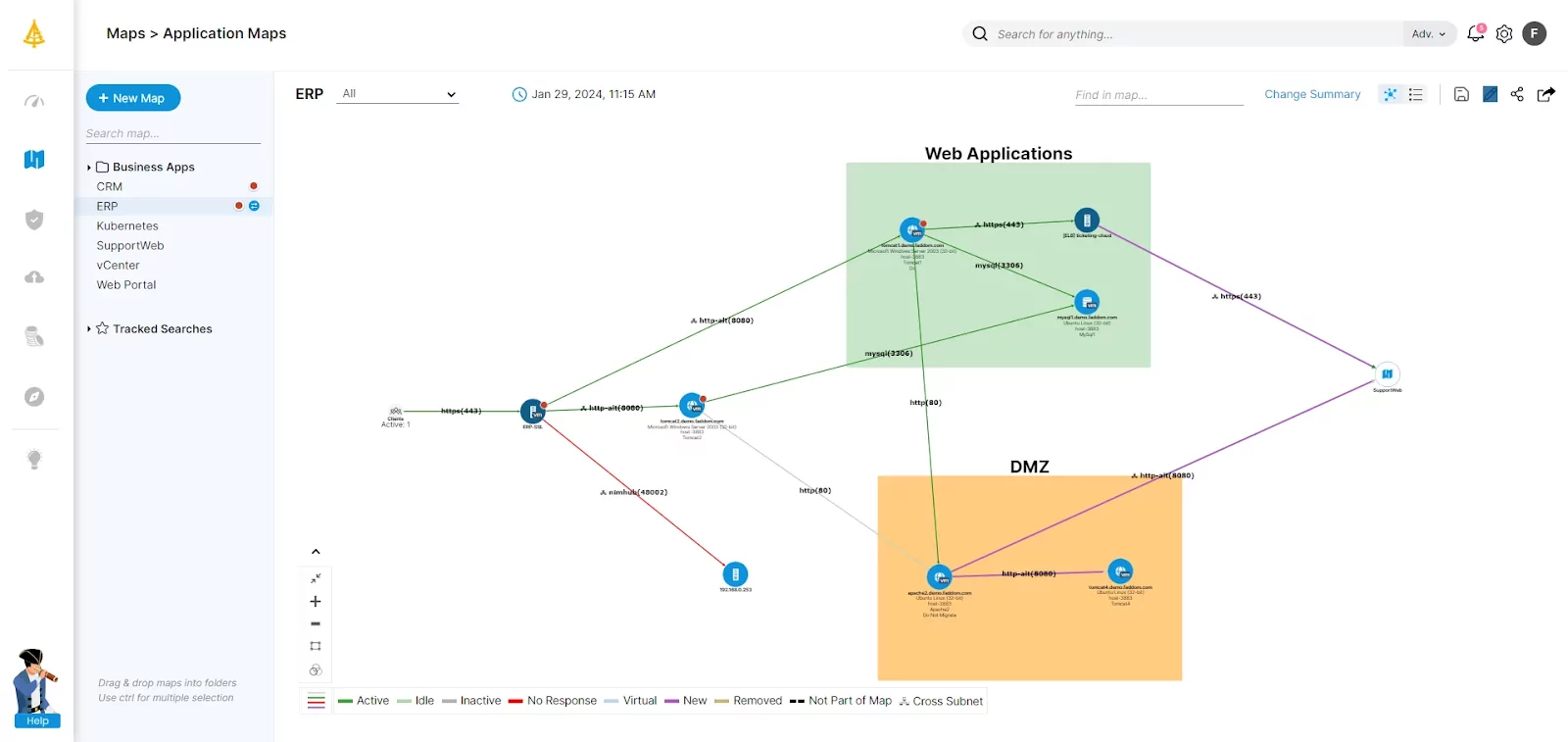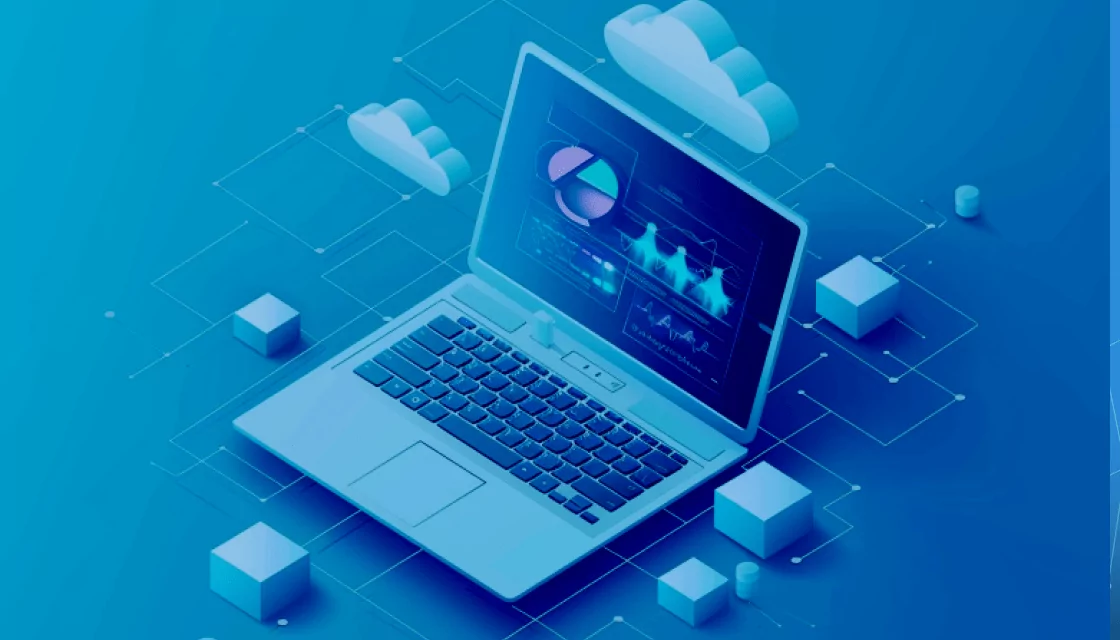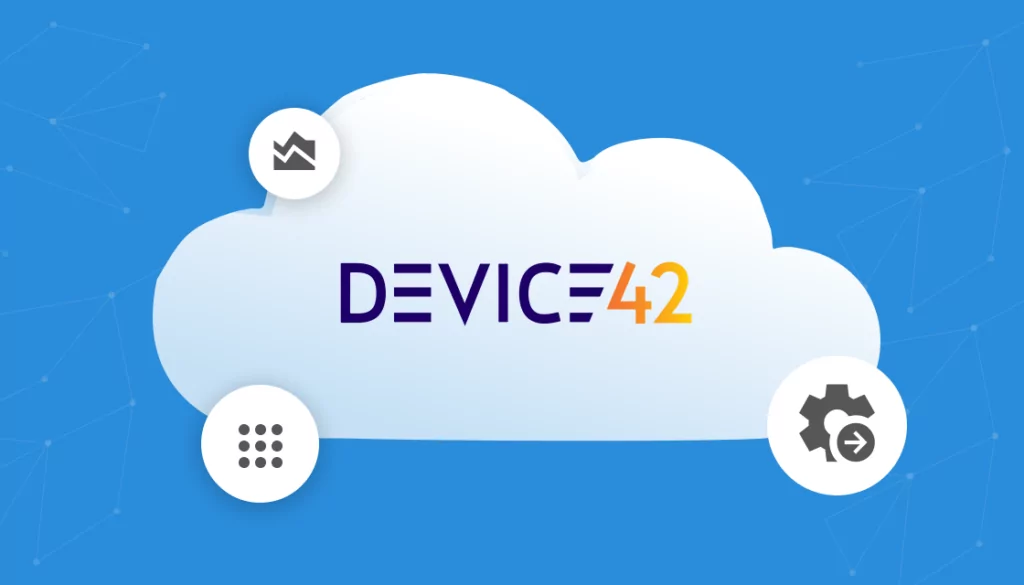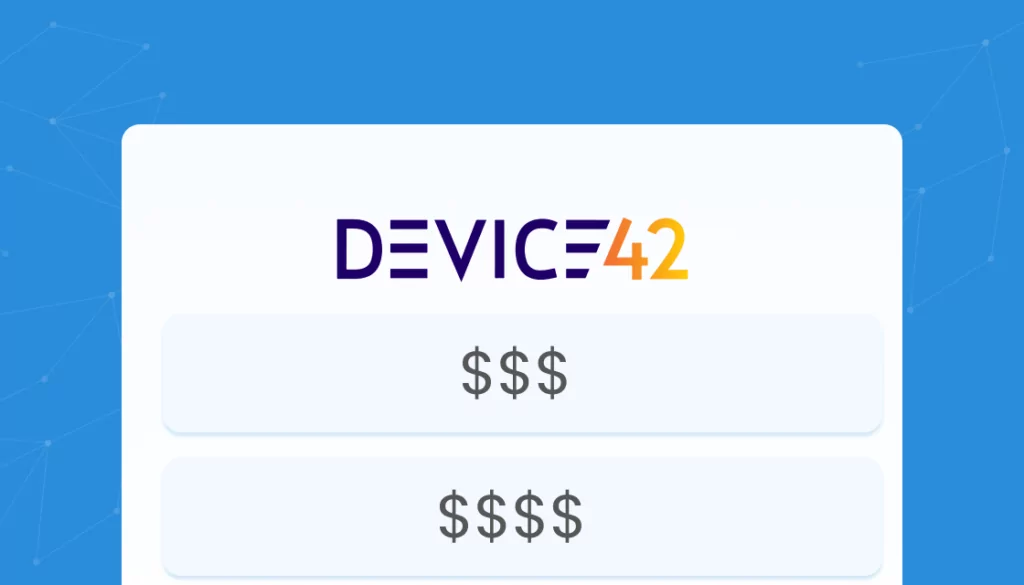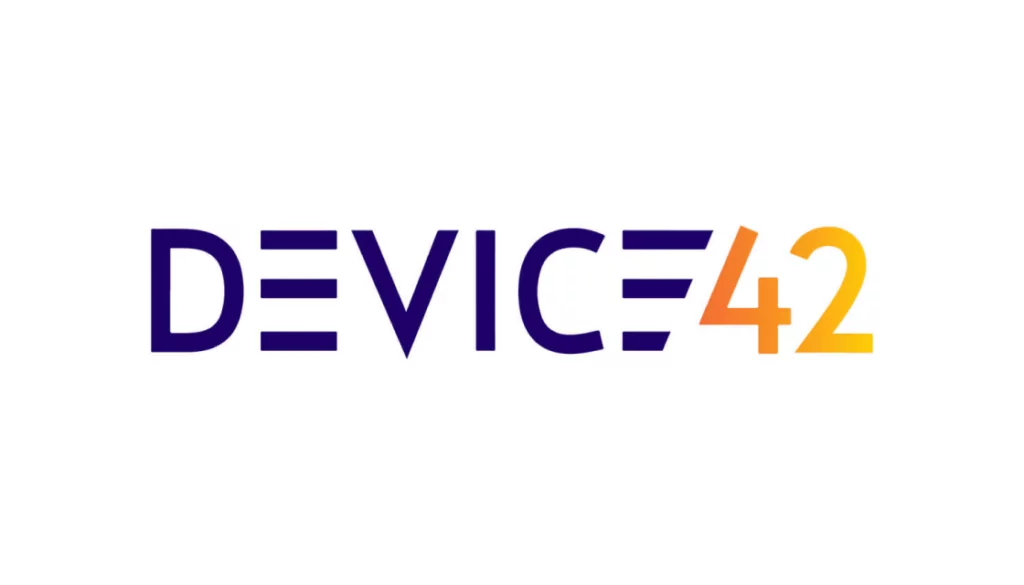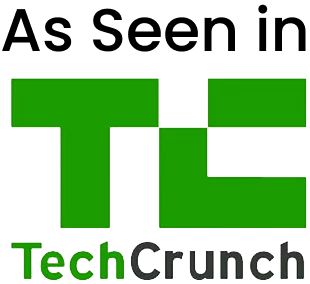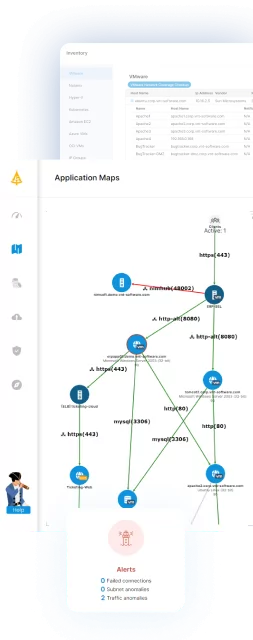What Is Device42 CMDB?
Device42 CMDB (Configuration Management Database) is an IT asset management tool designed to help organizations manage their IT infrastructure. It provides a centralized repository where details about the IT assets and their configurations are stored. This supports decision making in IT management, enhances compliance, and optimizes asset utilization.
By capturing detailed information about hardware, software, and networking components, Device42 CMDB provides a platform for IT planning, change management, and issue resolution.
Table of Contents
ToggleDevice42 CMDB Features
Device42 CMDB offers the following features and capabilities.
Data Standardization and Enrichment
Device42’s EnrichAI uses artificial intelligence to amalgamate, standardize, and enhance the configuration item (CI) data initially sourced from the infrastructure. It aims to avoid inconsistent and incomplete data by consolidating and enriching it with insights from vendors and other reliable sources.
Pre-Configured CMDB
Device42 streamlines the initial setup of a CMDB by offering pre-configured configuration items (CIs) and their relationships, which eliminates the need for a lengthy design process. This pre-configuration provides a starting framework that allows for modifications. Users can add CIs and define new relationships. Additional flexibility is provided through customizable user groups, password settings, and object-level permissions.
Visualizations
Once the CMDB is populated with data, Device42 provides several customizable visualization tools. Visualizations include diagrams of computer rooms and racks with power and capacity heat maps, views of IP connectivity and power chains, and maps showing dependencies between hardware, software, and applications.
Integrations
Device42 features a set of RESTful APIs that allow integration with other IT management applications. These integrations extend to IT Service Management (ITSM) tools like Jira, Zendesk, and ServiceNow, enabling direct linking of CIs to ITSM tickets and vice versa.
Device42 also supports integrations with configuration management tools like Puppet, Chef, and Ansible, enhancing server provisioning, configuration, and maintenance while eliminating redundant discovery processes. The platform also includes webhook integrations for automating tasks and managing events across the IT ecosystem.
Device42 CMDB Limitations
Device42 has some limitations that users should be aware of. These limitations were reported by users via the G2 platform.
Learning Curve
Device42’s features come with a steep learning curve, particularly for those without prior experience. New users might find the interface and navigation challenging due to its complexity and somewhat outdated design.
The system does not incorporate modern graphic elements, which could enhance user engagement and ease of use. Therefore, significant time and effort are needed initially to fully understand and utilize all the features offered by Device42.
Performance Issues
Users have reported that Device42 can sometimes experience slow performance, which can hinder efficiency in managing IT tasks, especially when processing large volumes of data. Such issues may delay IT operations, impacting the IT management team’s productivity.
Discovery and Customization Limitations
There are limitations in the tool’s ability to fully recognize and integrate with certain vendor systems. The platform does not allow customers to directly add custom Management Information Bases (MIBs), which can be a drawback for organizations requiring tailored device management solutions. The locked down nature of the source code also poses challenges for users who prefer to troubleshoot or modify the discovery processes themselves.
Additional Costs for Plugins
Some essential plugins are not included in the basic license package, and are needed to fully leverage Device42’s capabilities. This requires additional purchases, which can lead to unexpected costs for organizations.
Tutorial: Discovering Cloud Database with Device42
Let’s see how discovery of IT assets works in Device42, using the example of a cloud database.
Viewing a Cloud Database
To view a cloud database in Device42, navigate to Resources and then Cloud Databases from the main menu. This brings up a list of cloud databases, which can be searched by name or filtered based on various criteria such as Cloud Provider or Vendor Resource Subtype.
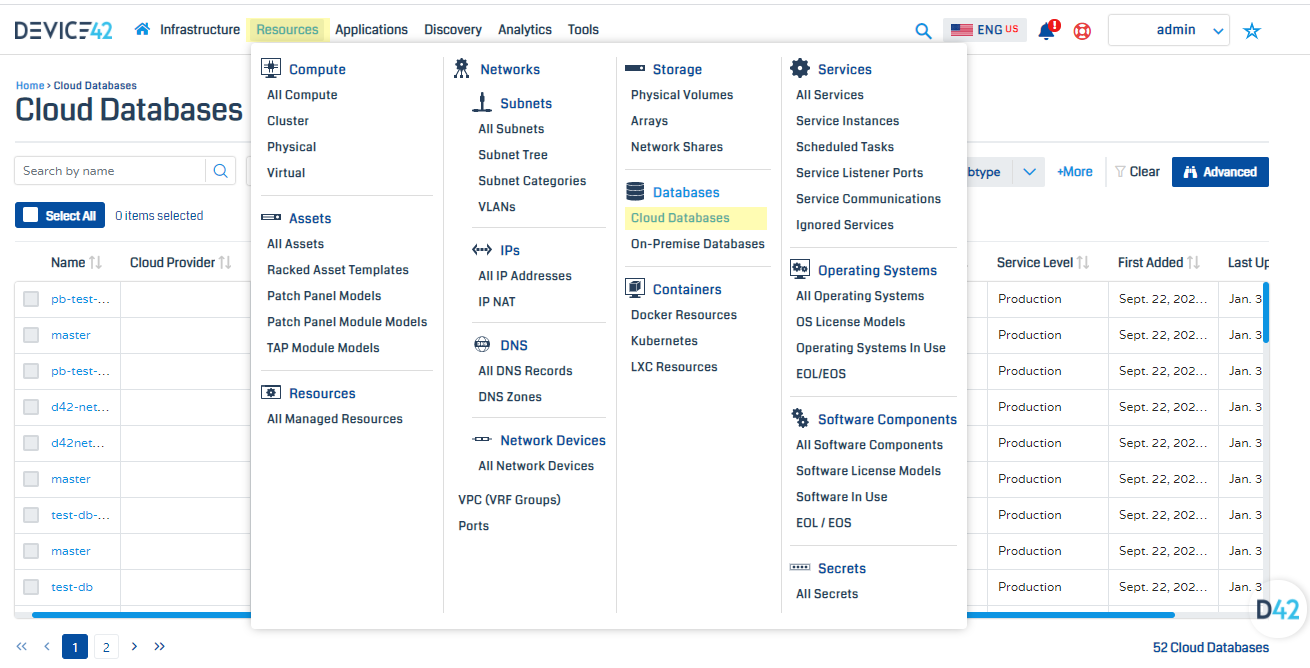
Source: Device42
For detailed searches, use the Advanced Search feature. Clicking on a cloud database name will display detailed information about the database, and the Resource Map link provides a topography map showing the database’s connections and context within the IT environment.
Editing a Cloud Database
Editing the details of a cloud database is straightforward. On the cloud database’s view page, click the Edit button to modify information such as Notes or Tags. Here, you can also update the database’s operational status and assign or change its service level. After making the necessary changes, click Save to apply them or Cancel to disregard any changes made.
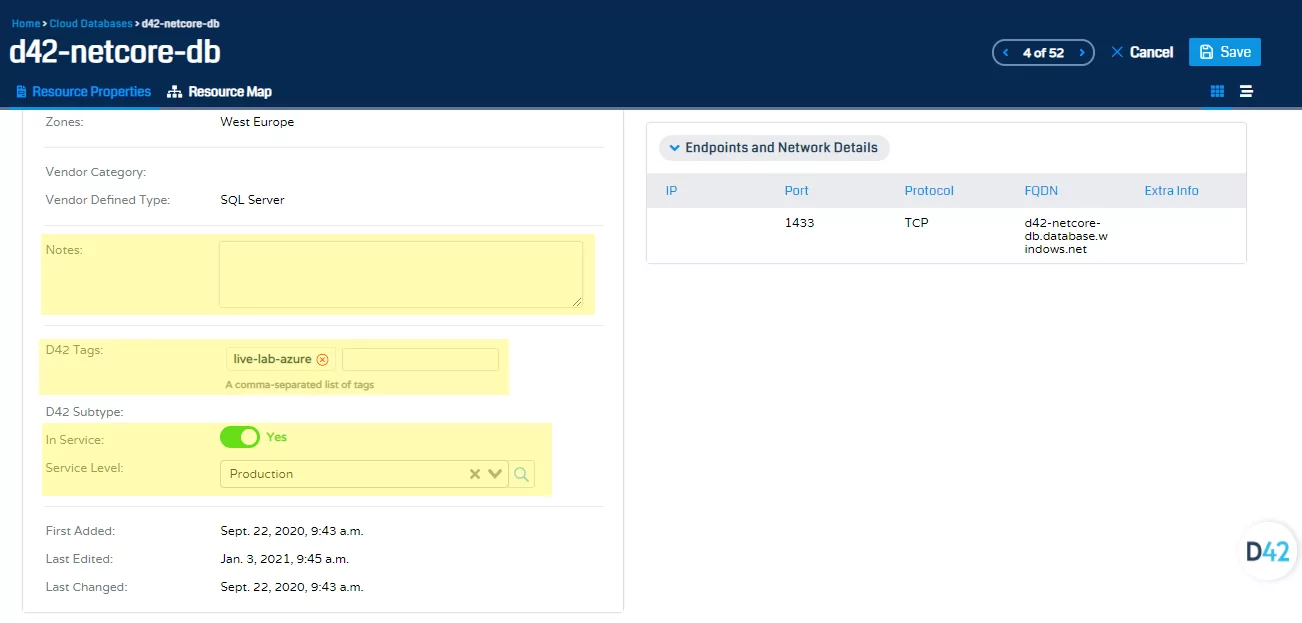
Source: Device42
Deleting a Cloud Database
To delete one or more cloud databases, select the desired databases from the list and choose either Fast Background Delete or Delete with Detailed Confirmation from the Actions menu. Confirm the deletion when prompted to ensure the database is permanently removed from the system. This action is completed by clicking the lightning bolt icon, which executes the deletion process.
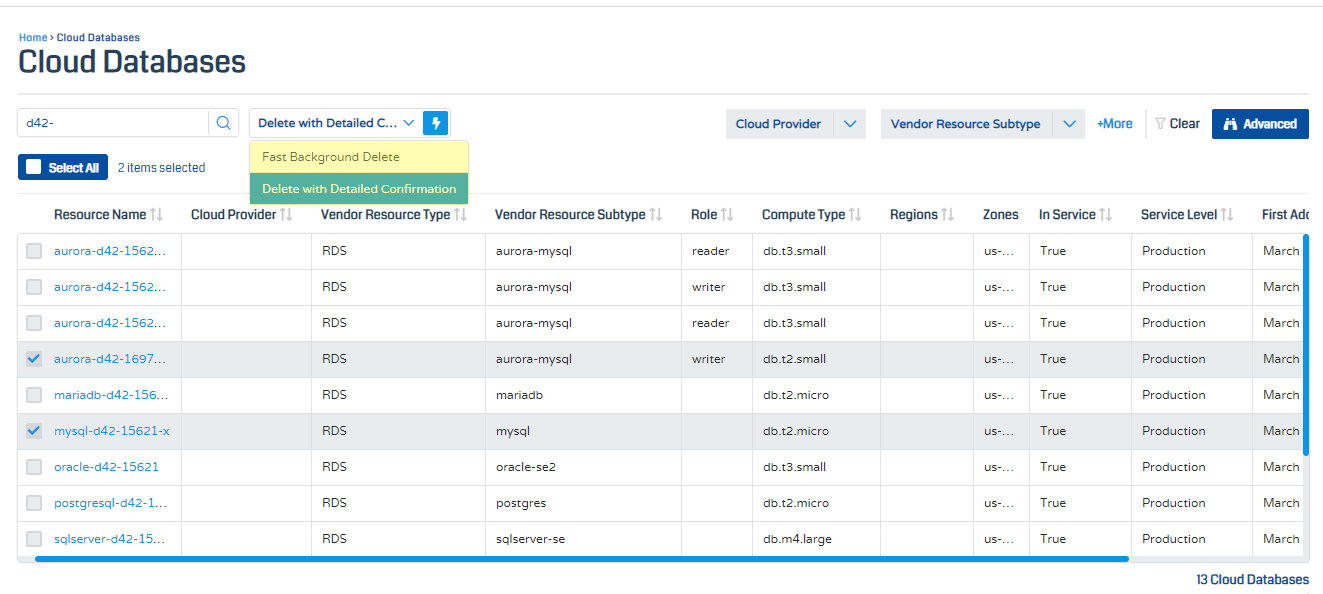
Source: Device42
Faddom: Ultimate Device42 CMDB Alternative
Most IT teams struggle to maintain an accurate CMDB for a variety of reasons, but it is mostly because IT environments on-premises and in the cloud are constantly changing. Many CMDBs cannot respond to the pace of DevOps or virtual assets like VMs, containers, and other cloud application resources. Others still require manual data entry validation and manual audits to stay up to date with new CI configurations and dependency changes.
On the other hand, Faddom is agentless, self-service software, inexpensive starting at $10K per year, that helps you visualize your on-premise and cloud infrastructure in real-time with continuous, automatic updates — in as little as 60 minutes. Start a free trial today!
